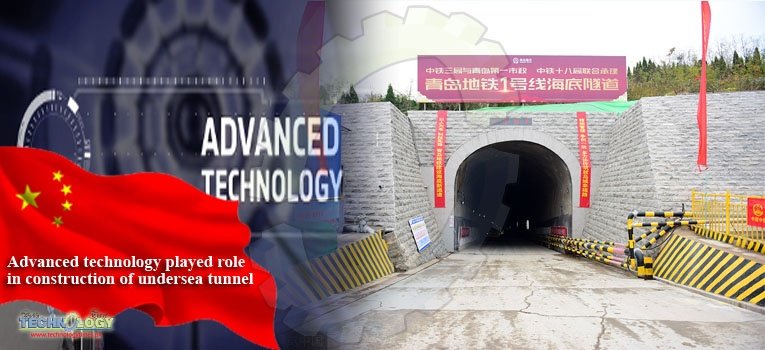China’s first undersea tunnel for a subway employed advanced technologies and machinery to combat complex geological conditions.

The cross-sea tunnel – an 8.1-kilometer segment, 3.49 km of which is underwater – spans Jiaozhou Bay in Qingdao, Shandong province, and links the coastal city’s downtown area in the east with the Huangdao district in the west.
It is the country’s deepest undersea tunnel, with its deepest section extending 88 meters below sea level. It bears water pressure stress of at least 8.8 kilograms per square centimeter. Other undersea tunnels have been built for vehicles, but this is the first for a subway.
Completion of the tunnel, which is part of the city’s subway Line 1, was announced on Tuesday. Construction started in September 2015.
Workers faced complex geological conditions and high risks, such as tidal surges and the collapse of surrounding rocks. They used the most advanced surveying and forecasting methods to eliminate misjudgments and identify risks.
“More than 90 percent of the work was done by modern machinery with intelligent functions, which reduced manual labor and improved efficiency,” said Yin Xianfeng, general manager of Line 1.
“The drilling rig they used is multifunctional, with a high-definition camera at the front of its drill to help them observe geological conditions – like doctors using endoscopes.”
The tunnel is set to be part of a 60-km subway line connecting the eastern and western parts of Qingdao. The full line is expected to open to traffic at the end of 2020 and to significantly cut travel time from one side to the other.
It is estimated that passengers will need only 6 minutes by subway to travel between the two parts of the city, according to Qingdao Metro Co, the line’s future operator.
The line will be the third major cross-sea transport route, following a cross-sea bridge and another undersea tunnel built for cars, both of which opened to traffic in July 2011. They have greatly enhanced the city’s economic growth. The Huangdao district has become a new engine for the city’s development.